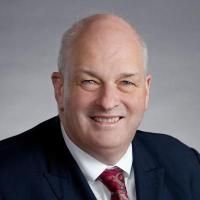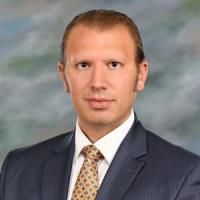Neurological Complications and Recovery Rates of Patients With Adult Cervical Deformity Surgeries.
Date
2022-07
Journal Title
Journal ISSN
Volume Title
Repository Usage Stats
views
downloads
Citation Stats
Attention Stats
Abstract
Study design
Retrospective cohort study.Objective
This study aims to report the incidence, risk factors, and recovery rate of neurological complications (NC) in patients with adult cervical deformity (ACD) who underwent corrective surgery.Methods
ACD patients undergoing surgery from 2013 to 2015 were enrolled in a prospective, multicenter database. Patients were separated into 2 groups according to the presence of neurological complications (NC vs no-NC groups). The types, timing, recovery patterns, and interventions for NC were recorded. Patients' demographics, surgical details, radiographic parameters, and health-related quality of life (HRQOL) scores were compared.Results
106 patients were prospectively included. Average age was 60.8 years with a mean of 18.2 months follow-up. The overall incidence of NC was 18.9%; of these, 68.1% were major complications. Nerve root motor deficit was the most common complication, followed by radiculopathy, sensory deficit, and spinal cord injury. The proportion of complications occurring within 30 days of surgery was 54.5%. The recovery rate from neurological complication was high (90.9%), with most of the recoveries occurring within 6 months and continuing even after 12 months. Only 2 patients (1.9%) had continuous neurological complication. No demographic or preoperative radiographic risk factors could be identified, and anterior corpectomy and posterior foraminotomy were found to be performed less in the NC group. The final HRQOL outcome was not significantly different between the 2 groups.Conclusions
Our data is valuable to surgeons and patients to better understand the neurological complications before performing or undergoing complex cervical deformity surgery.Type
Department
Description
Provenance
Subjects
Citation
Permalink
Published Version (Please cite this version)
Publication Info
Kim, Han Jo, Yu-Cheng Yao, Christopher I Shaffrey, Justin S Smith, Michael P Kelly, Munish Gupta, Todd J Albert, Themistocles S Protopsaltis, et al. (2022). Neurological Complications and Recovery Rates of Patients With Adult Cervical Deformity Surgeries. Global spine journal, 12(6). pp. 1091–1097. 10.1177/2192568220975735 Retrieved from https://hdl.handle.net/10161/28005.
This is constructed from limited available data and may be imprecise. To cite this article, please review & use the official citation provided by the journal.
Collections
Scholars@Duke

Christopher Ignatius Shaffrey
I have more than 25 years of experience treating patients of all ages with spinal disorders. I have had an interest in the management of spinal disorders since starting my medical education. I performed residencies in both orthopaedic surgery and neurosurgery to gain a comprehensive understanding of the entire range of spinal disorders. My goal has been to find innovative ways to manage the range of spinal conditions, straightforward to complex. I have a focus on managing patients with complex spinal disorders. My patient evaluation and management philosophy is to provide engaged, compassionate care that focuses on providing the simplest and least aggressive treatment option for a particular condition. In many cases, non-operative treatment options exist to improve a patient’s symptoms. I have been actively engaged in clinical research to find the best ways to manage spinal disorders in order to achieve better results with fewer complications.

Peter Passias
Throughout my medical career, I have remained dedicated to improving my patients' quality of life. As a specialist in adult cervical and spinal deformity surgery, I understand the significant impact our interventions have on individuals suffering from debilitating pain and physical and mental health challenges. Spinal deformity surgery merges the complexities of spinal biomechanics with the needs of an aging population. My research focuses on spinal alignment, biomechanics, innovative surgical techniques, and health economics to ensure value-based care that enhances patient outcomes.
Unless otherwise indicated, scholarly articles published by Duke faculty members are made available here with a CC-BY-NC (Creative Commons Attribution Non-Commercial) license, as enabled by the Duke Open Access Policy. If you wish to use the materials in ways not already permitted under CC-BY-NC, please consult the copyright owner. Other materials are made available here through the author’s grant of a non-exclusive license to make their work openly accessible.
